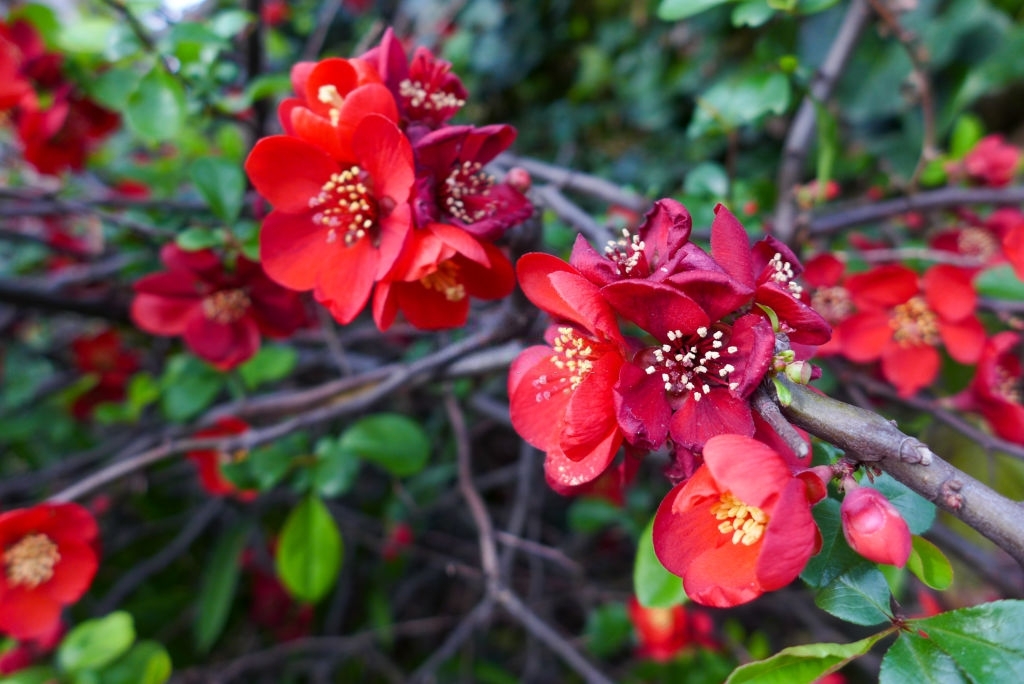
Japanese quince or Chaenomeles is a low-growing deciduous shrub, reaching a height of up to 3 m (much lower in the northern regions). It is popular for both its decorative properties, which attract attention from early spring to late autumn and the beneficial properties of the fruit.
In addition, quince tolerates a haircut well. Therefore it is actively used in landscape design to create hedges. And if we consider that most species, including hybrid ones, have shot with sharp, up to 2 cm long, thorns, then such a fence will cope with protective functions.
The quince bush has a strong developed root system, so growing them on loose soils will help prevent erosion or strengthen the slope.
Japanese Quince Planting and Care
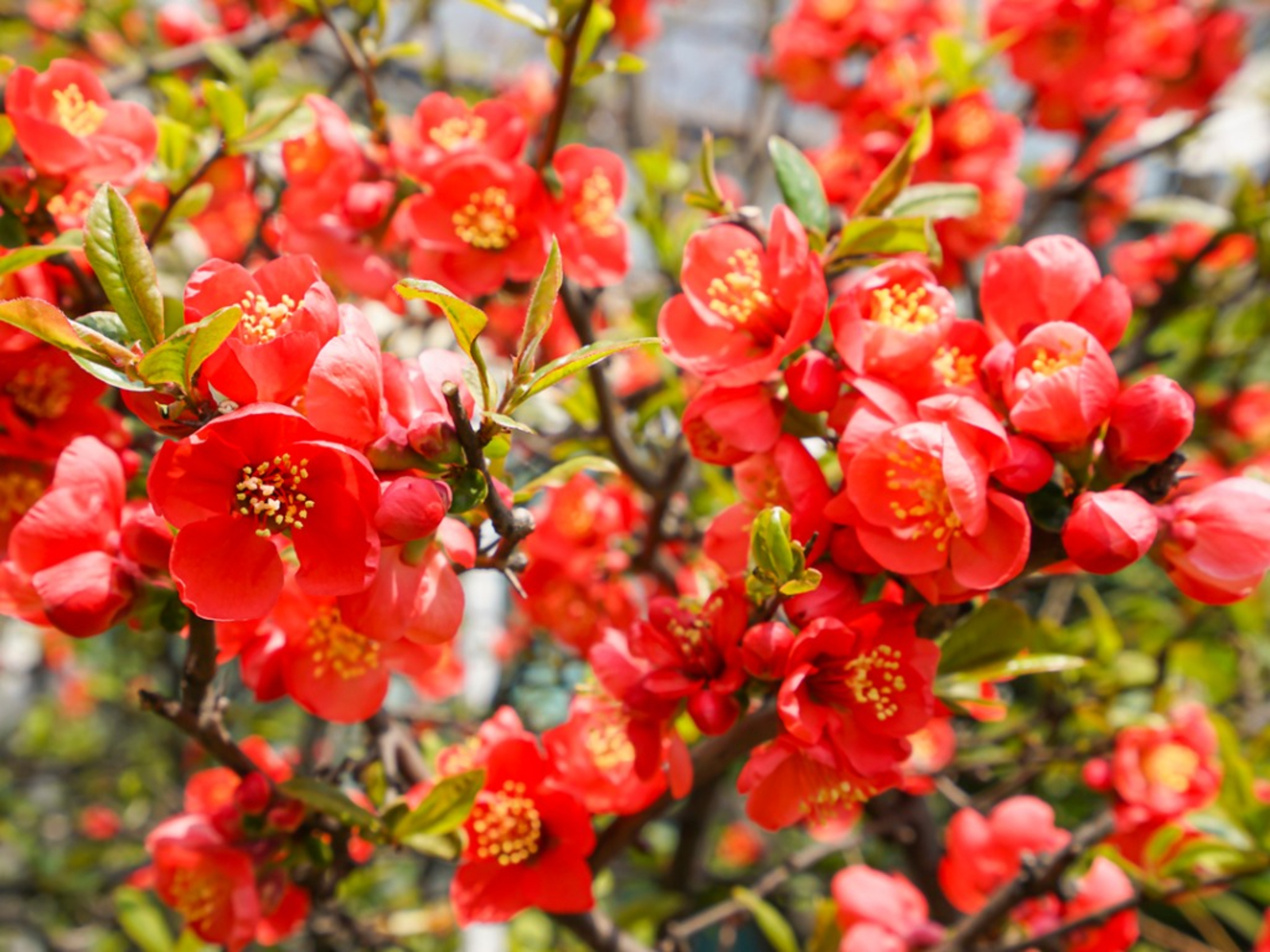
For almost 200 years within Europe, quince was grown exclusively as an ornamental, flowering culture. Even before flowering, the reddish pink buds look spectacular against the background of emerald green leaves. Japanese quince blooms profusely, within 3 weeks, large (4-5 cm in diameter) flowers are closely collected on arcuate shoots. The color of the hybrid varieties differs significantly from the standard reddish pink: from delicate coral pink to rich garnet red and white. The flowers themselves can be either simple or double. Therefore, Japanese quince in landscape design is a prevalent and beloved tree by gardeners. Thanks to it, the garden literally transforms and looks very elegant, especially during its flowering period.
It looks great both as a single landing on the background of the lawn. Creeping undersized hybrids are used to decorate the foothills of alpine slides or in rockeries. There are types of quince that are grown in the form of bonsai.
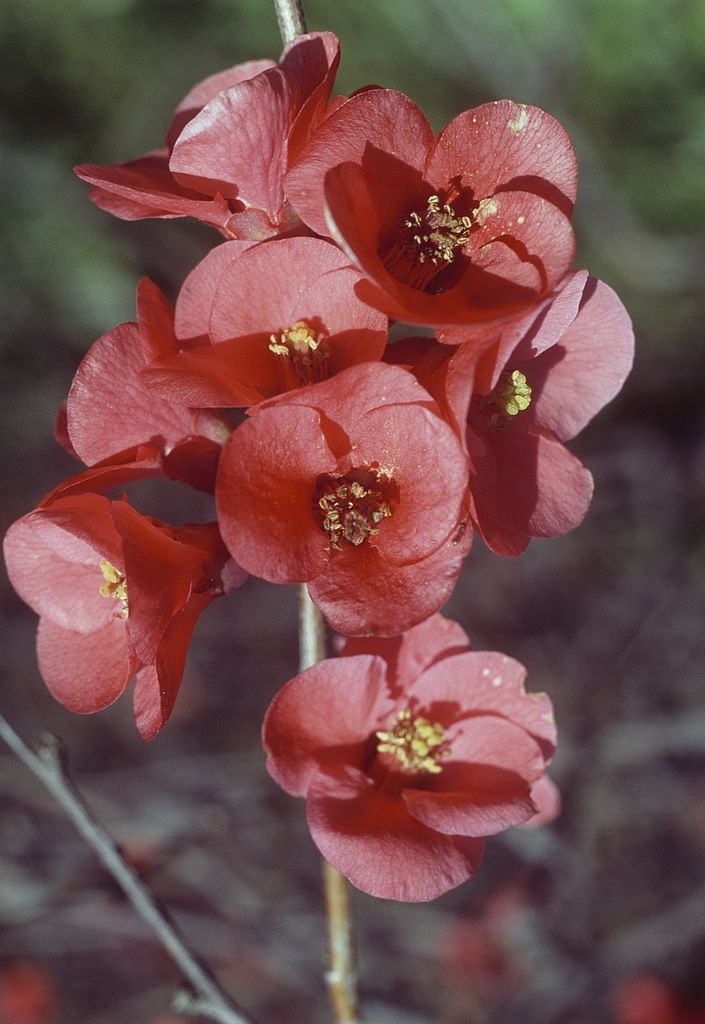
More than 500 species of quince are known, but due to climatic features, only four are most widespread in our country:
- Magnificent Quince (excellent Chaenomeles, excellent quince) – a short (up to 1 m) bush with large flowers (color depends on the variety): pink, white, orange, red, and even two-colored.
- Katayanskaya Quince – up to 3 m high, with large leaves extended upward, flowers are white or pink.
- Low Japanese Quince (Chaenomeles Maulea) – a low-growing (0.5 – 1 m) bush, but very frost-resistant. Flowers orange-red.
- Japanese Quince High (Chaenomeles beautiful) – a tall (from 1.5 to 3 m) bush with dense foliage of bright green color with a long, up to 20 days, flowering.
Fruits are apple or pear-shaped, medium-sized (25-50 g). They are practically not consumed in raw form. The value of the culture is in the abundance of useful properties, in terms of the content of vitamin C, it surpasses all known fruits and berries (some varieties have 180 mg of vitamin C per 100 g of fruit, which is several times higher than that of lemon), for which quince is also called “ northern lemon. ” In addition, quince fruits are rich in vitamins (B2, B6, B1, E, PP) and trace elements (zinc, copper, magnesium, potassium, but especially a lot of iodine and cobalt).
Advice! The Japanese quince shrub is a cross-pollinated plant. Therefore, several bushes should be planted nearby to increase yields.
Growing Japanese quince is also popular because it is quite unpretentious and does not require much attention. However, important factors need to be observed, such as:
Embellishment
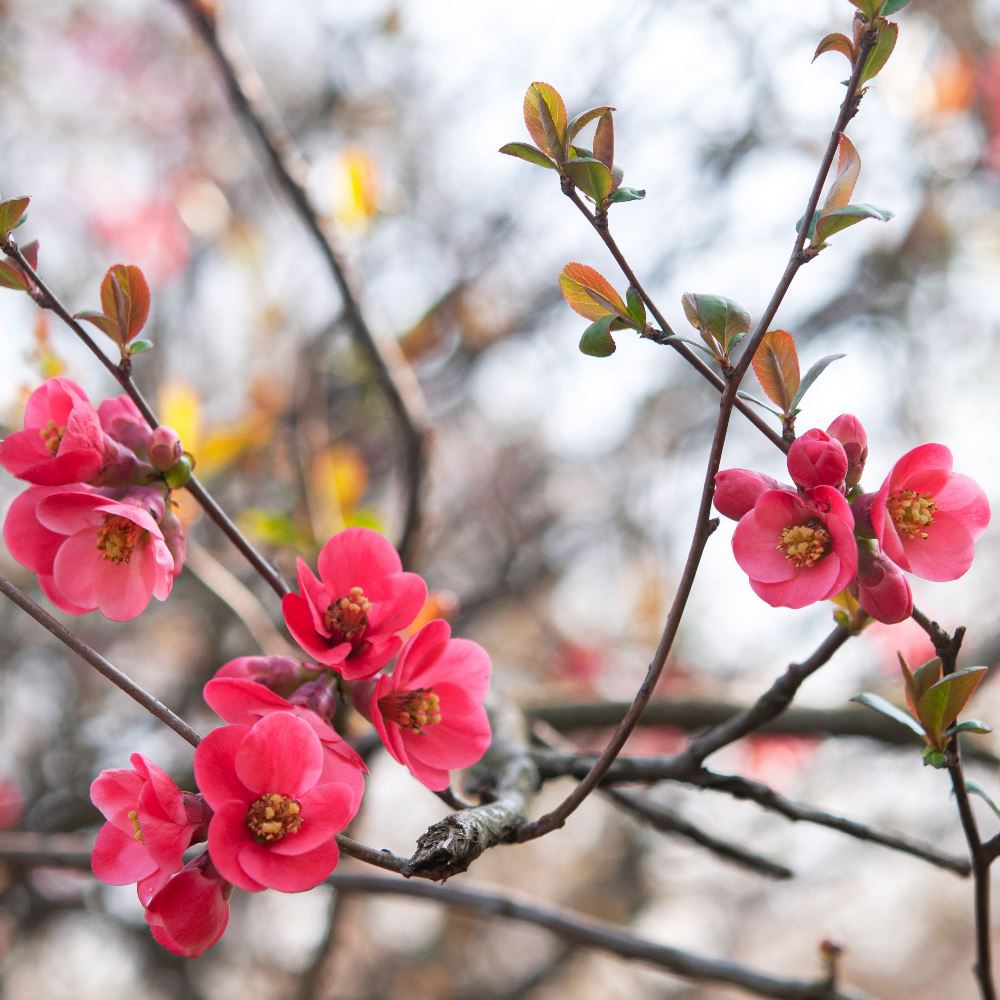
For planting Japanese quince, it is necessary to select a well-lit area – in the shade, and the plant develops worse, grows more slowly, does not bloom so abundantly. The best soil is sod-podzolic, loamy or sandy loam, rich in humus, pH in the region of 6-6.5. Quince develops worse on peat soils, and alkaline soil provokes the development of leaf chlorosis.
Advice! It is better to plant quince in spring. Autumn planting is possible but not desirable – the plant is thermophilic. In early cold weather, the shrub can die without taking root.
Watering
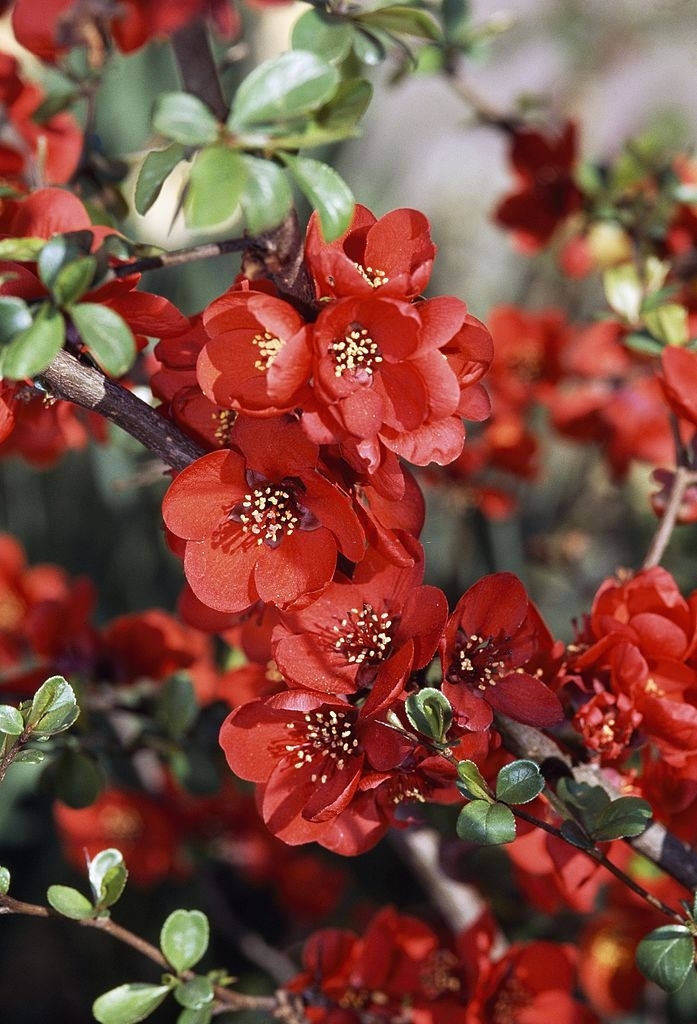
Japanese Quince is drought-resistant. Watering will be required only in case of prolonged absence of precipitation. Therefore, moderate regular watering is necessary only for young bushes during the period of active growth.
Top Dressing

Young plants are not fed in the first year after planting – this can damage (burn) fragile roots. In the future, quince is fed with mineral fertilizers twice: in the spring – before flowering, mainly nitrogen (it is scattered over the soil surface), the second time – after the fruits are formed (complex fertilizer is applied).
Winter Care
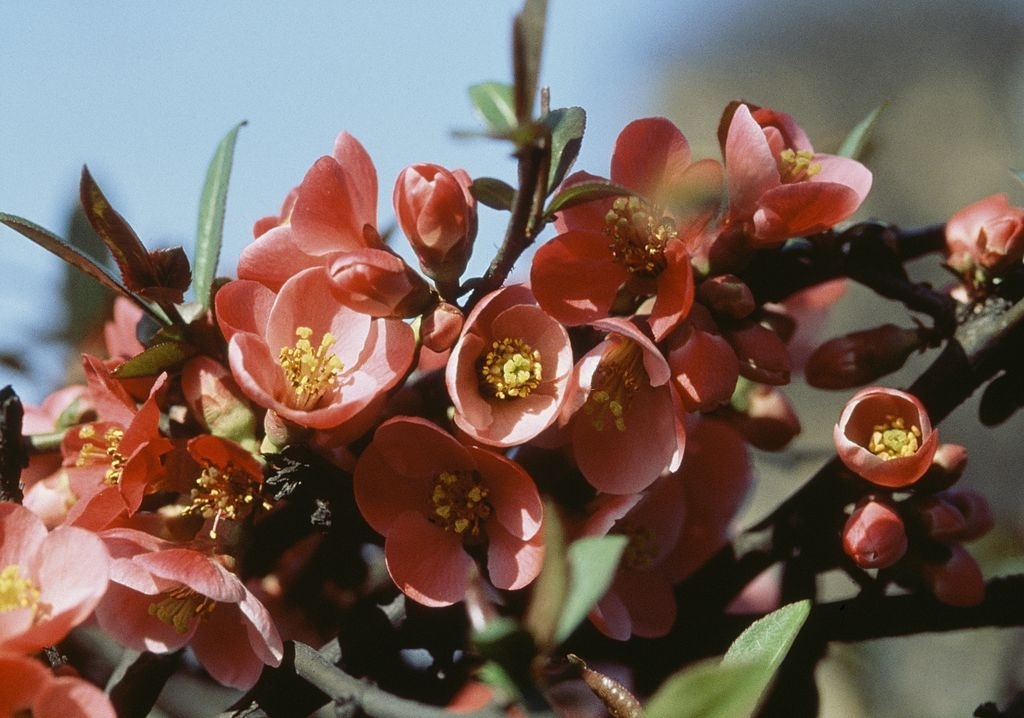
Adult plants winter well, withstanding frosts down to -30C, especially if they are well covered with snow. Young specimens and flowering varieties are covered in autumn with spruce branches or fallen leaves, using a covering material.
Advice! Low-growing compact bushes for the winter can be protected by covering them with wooden boxes or cardboard boxes.
In summer, the soil around the shrub is loosened, and weeds are removed. A good result is the use of mulch – it retains moisture, inhibits the development of weeds, and optimizes the structure of the soil. Chopped bark, sawdust, peat, or dry grass are used as mulch.
Pruning
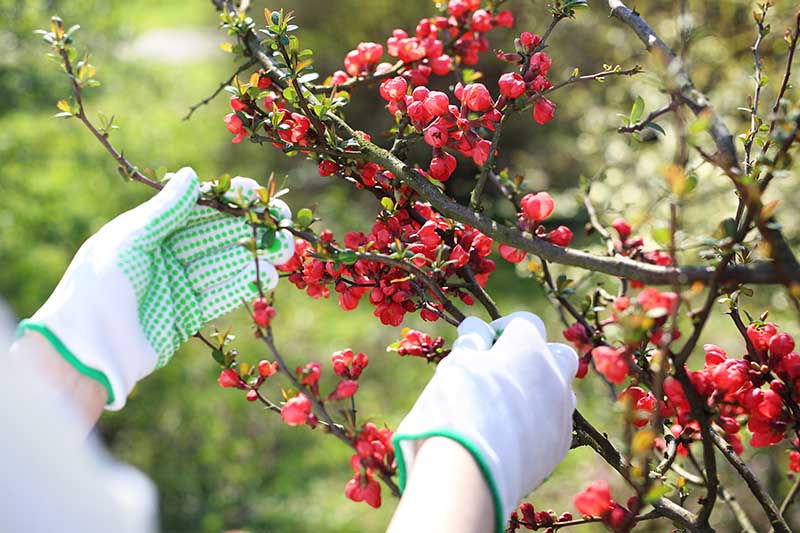
Japanese Quince tolerates pruning well, the plant quickly recovers, although this process, due to thorny branches, is not very pleasant. In addition to decorative haircuts, bushes must be trimmed in the following cases:
- Sanitary Pruning – carried out in spring, damaged, frozen, and dry branches are removed, the cut point is lubricated with garden varnish.
- The Formation of a Bush – up to 3 years, the bush almost does not branch, pruning begins at 4-5 years, is carried out in early spring to prevent thickening of the bush and its excessive expansion in breadth. Part of the root growth should be removed annually, leaving no more than 2-3 root suckers for further growth. The most valuable shoots are those growing horizontally, at the height of 20-40 cm. Shoots growing vertically upward or creeping along the ground are removed.
- Rejuvenating Pruning – carried out at the 8-10th year of the life of the bush. First, you need to thin out the bush, removing all thin, weak, too elongated shoots – only 10-15 of the strongest branches are left. It is important to take into account that the branches of 3-4 years old bear fruit. Therefore, the bush is formed to constitute the majority, and the shoots older than 5-6 years are cut off.
Diseases and Treatment
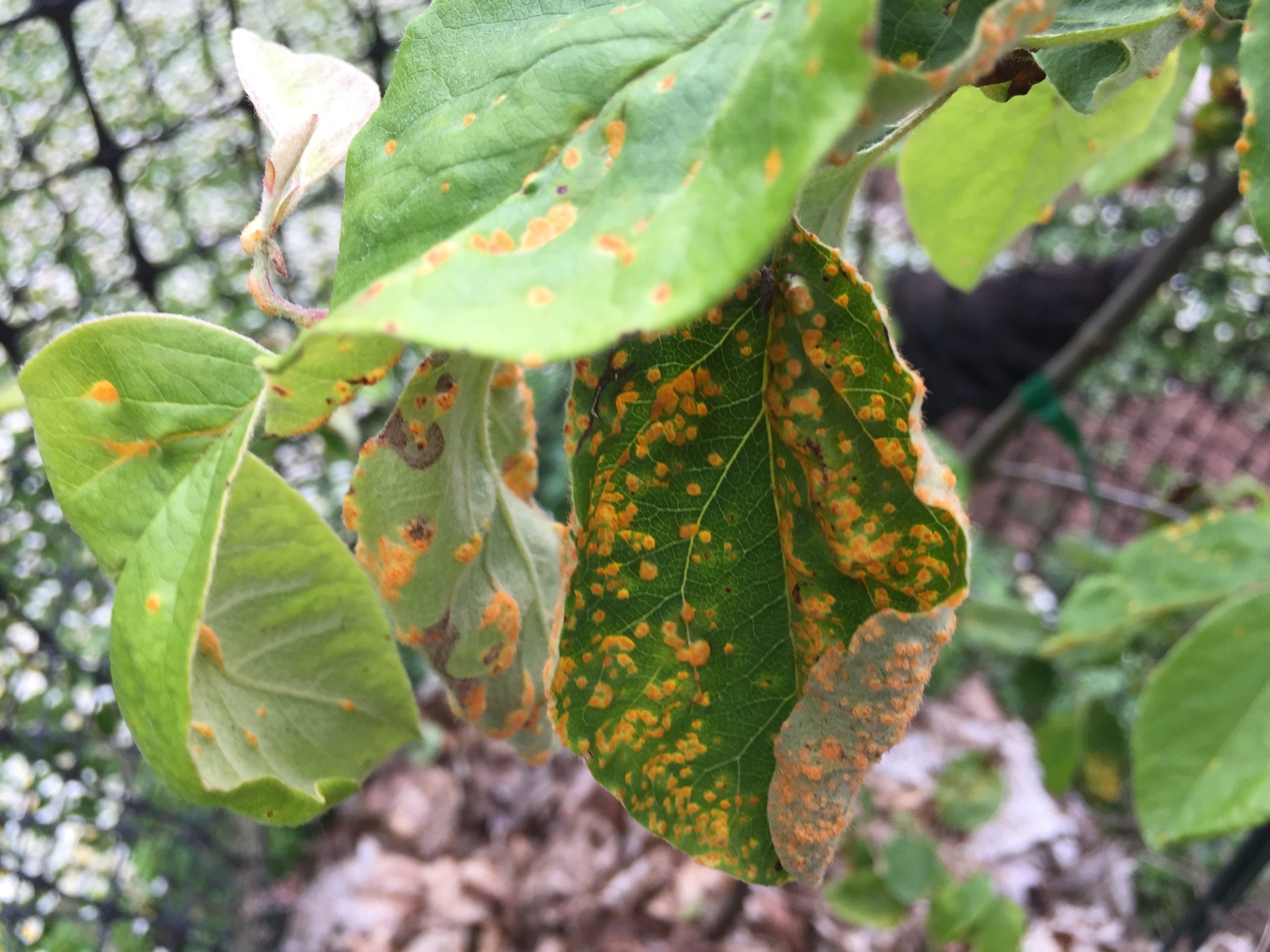
Japanese quince is extremely resistant to pests and diseases. The exception is that in cool and damp weather and high humidity, spots may appear on the leaves or necrosis appear; with the development of fungal diseases, the leaves begin to deform and dry out. Treatment – treat the plant with copper-soap liquid (for 10 liters of water – 100 g of copper sulfate) or 0.2% fundozol.
Japanese Quince: Reproduction and its Features
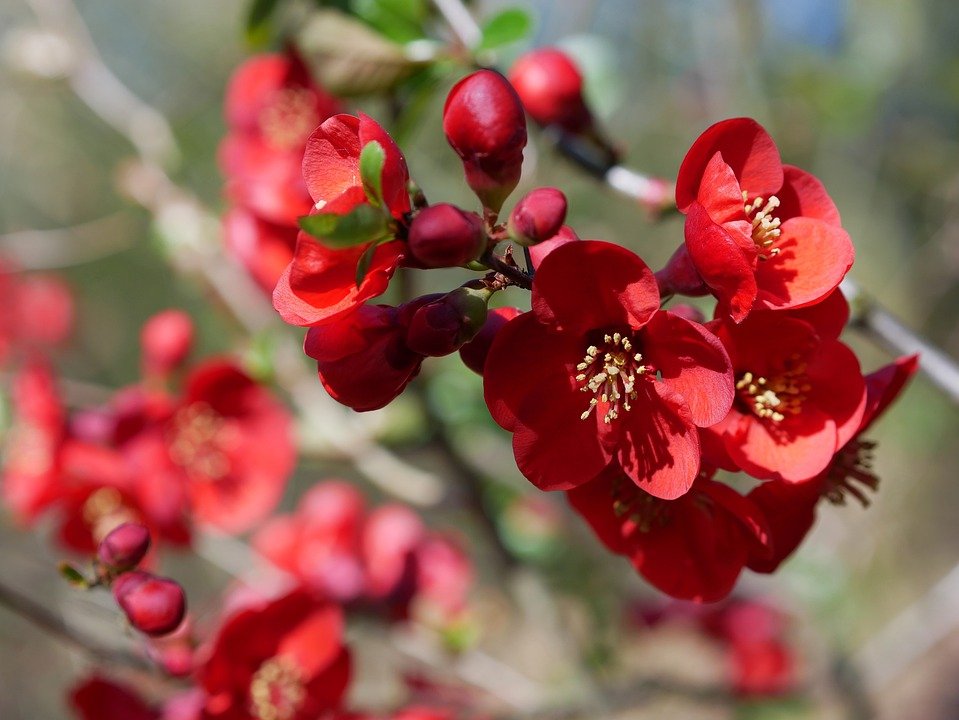
Japanese quince reproduces in several ways:
- Seeds – ripe seeds are planted in prepared soil in late February – early March. Germination usually lasts up to 6 weeks, and then the seedlings dive into separate pots. In late May-early June, mature seedlings can be planted in open ground. In winter, seedlings must be well protected from frost. For the northern territories, it is recommended to plant already well-developed, two-year-old seedlings in open ground. Lack of seed propagation – seedlings do not retain varietal characteristics. Therefore they are usually used for rootstocks.
- Cuttings – in the first half of June, in the morning, while it is not hot, the lateral strong shoots are cut with pruning shears, from which cuttings with one or two internodes are cut. You can also use annual cuttings with a “heel” – a small (up to 1 cm) piece of a two-year branch. To improve rooting, cuttings are pretreated for a day in a 0.001% solution of indole butyric acid. Next, cuttings are planted in a greenhouse, in a substrate of peat and sand (ratio 1: 3), deepening at an inclination of 30 degrees. At a temperature of 20-25C and high (90%) humidity, rooting occurs in 40 days. By autumn, a young specimen with a developed root system is ready for planting in the ground.
- Dividing the Bush is the simplest but effective way. In the spring, you can get up to 6 root suckers from one bush. Then, from the root shoot, a shoot with a thickness of 0.5 cm and a length of 10-15 is chosen, with a good root system.
- Branches – long lodging branches can spontaneously take root. Therefore, in early spring, having previously loosened the soil, they pin down annual shoots. In the summer, the allotted shoot is spud and watered, and by the fall, rooting takes place, after which the cuttings are cut off and transplanted.






